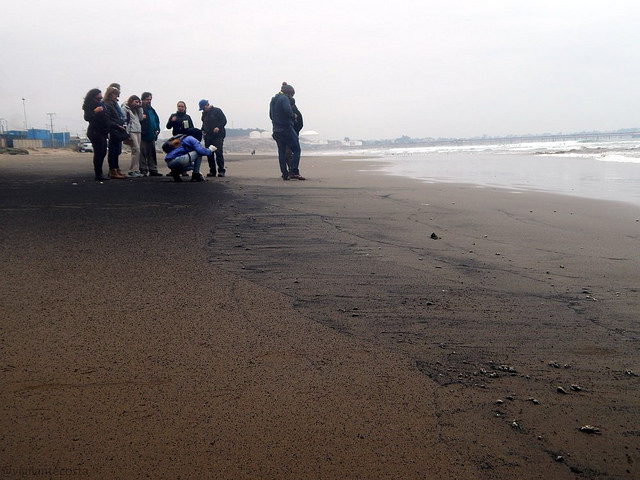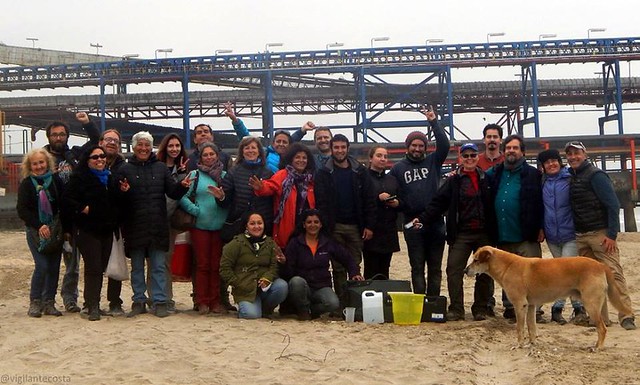
A study by Waterkeeper Alliance and the Maule Itata Coastkeeper of the area near the AES Ventanas coal-fired power plant in Puchuncaví, Chile found toxic contamination of two drinking water wells. The full report can be read here. A Spanish-language version is available here.
The groups also studied a nearby beach, where coal dust is spilled when large conveyor belts transport coal from ships and barges to the shore.
Water samples and a soil sample from the beach were collected earlier this year at seven locations and analyzed by Pace Analytical Laboratories in the United States. Pace Labs used U.S. Environmental Protection Agency (EPA) Methods 200.8 and 200.7 for the water samples and EPA Method 6020B for the soil sample.
Pace found exceedances of U.S. EPA drinking water quality criteria or goals for aluminum, arsenic, and lead in the two drinking water wells, which were located at private homes. Pace also found hexavalent chromium in the wells. Although the hexavalent chromium levels did not exceed water quality standards, its toxicity at low levels is a concern.
The groups also trained community members to gather samples of soil and water to determine if coal and coal ash is contributing heavy metals to surface water, wells, and public beaches. In order to eliminate ongoing impacts, the Chilean government should accelerate its policy goal of shutting coal plants in Chile as quickly as possible.
A group from the area, called a “sacrifice zone” because of the widespread environmental devastation, traveled to the United Nations in Geneva this past week to bring more attention to the problems in the area.
“For nearly ten years, we have worked in the Maule Itata coastal zone and other areas of Chile, documenting and investigating water pollution problems, and in 2009 we began our first connection to the Quintero-Puchuncaví area by participating in a seminar with organizations from different parts of the country that have been affected or threatened by pollution from industrial coal facilities, said Rodrigo de la O Guerrero, the Executive Director of Vigilante Costero, who assisted with the investigation.
